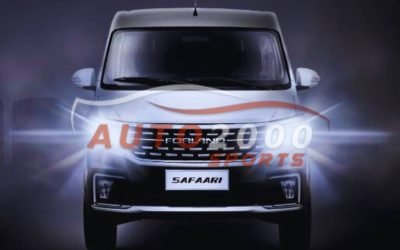China’s Electric Vehicle Giant Eyeing Pakistan’s Auto Sector
In a move that could reshape Pakistan’s automotive landscape, a prominent Chinese electric vehicle (EV) manufacturer, often dubbed China’s Tesla, has expressed interest in investing in the country’s burgeoning auto sector. This development comes at a time when global attention is increasingly focusing on sustainable transportation solutions, making Pakistan an attractive market for the expansion of electric vehicles.
The Rise of China’s Electric Vehicle Industry
China has emerged as a global leader in the electric vehicle industry, with a robust ecosystem of manufacturers producing cutting-edge electric cars and setting ambitious goals for transitioning towards clean energy. The entry of a major Chinese player into Pakistan’s auto sector signifies not only a bilateral economic collaboration but also the potential for a significant shift towards environmentally friendly transportation solutions within the country.
The Company: A Brief Overview
Unveiling the Chinese Tesla
The company in question, often referred to as China’s Tesla, has gained international acclaim for its innovative electric vehicles, advanced battery technology, and commitment to sustainability. With a proven track record in the world’s largest automotive market, the company is now eyeing new horizons, and Pakistan has emerged as a strategic destination.
Exploring the Investment Landscape
Potential Investment Areas
The Chinese electric vehicle giant is not merely looking to sell cars in Pakistan but is exploring avenues for substantial investments in the local auto sector. This could include establishing manufacturing facilities, research and development centers, and the creation of a robust charging infrastructure essential for the widespread adoption of electric vehicles.
Job Creation and Economic Impact
One of the immediate benefits of such an investment would be the creation of job opportunities in various sectors. From skilled manufacturing jobs to positions in research and development, the influx of foreign investment could significantly boost employment in the country. Additionally, the economic impact extends to the development of auxiliary industries and the generation of revenue through exports.
The Electric Vehicle Landscape in Pakistan
Current Scenario
Pakistan’s auto industry has traditionally been dominated by internal combustion engine vehicles, but the winds of change are beginning to blow. The introduction of electric vehicles aligns with the country’s commitment to sustainable development and reducing its carbon footprint. The potential collaboration with the Chinese electric vehicle manufacturer could accelerate this transition and position Pakistan as a regional leader in clean transportation.
Infrastructure Challenges
However, the successful integration of electric vehicles into Pakistan’s transportation fabric hinges on overcoming infrastructure challenges. Establishing a network of charging stations across the country is a critical aspect of ensuring the practicality and convenience of electric vehicles. The Chinese company’s investment could address this hurdle, facilitating the widespread adoption of electric vehicles in Pakistan.
Opportunities for Technological Transfer
Knowledge Exchange
Beyond the economic impact, a partnership with the Chinese electric vehicle giant could usher in a valuable exchange of technological know-how. Collaborations in research and development can contribute to the enhancement of local capabilities, fostering a culture of innovation within Pakistan’s auto industry.
Skill Development
Moreover, the influx of advanced technology necessitates a skilled workforce capable of handling the intricacies of electric vehicle manufacturing and maintenance. The collaboration could involve training programs and knowledge transfer initiatives, empowering local talent and contributing to the overall growth of the country’s technical expertise.
Government’s Role and Regulatory Framework
Policy Support
For this collaboration to reach its full potential, government support and a conducive regulatory framework are indispensable. Clear policies regarding electric vehicle manufacturing, import regulations, and incentives for consumers are essential components to create an environment conducive to the growth of the electric vehicle market.
Environmental Impact Assessment
The government must also conduct a comprehensive environmental impact assessment to understand the long-term effects of electric vehicles on the country’s energy grid and overall sustainability. This assessment can inform future policies and ensure a harmonious integration of electric vehicles into the existing transportation infrastructure.
Public Perception and Consumer Adoption
Shifting Mindsets
The success of electric vehicles in Pakistan will depend significantly on public perception and consumer adoption. Awareness campaigns highlighting the environmental benefits, cost savings, and technological advancements can play a pivotal role in shaping a positive attitude toward electric vehicles.
Affordability and Accessibility
Addressing concerns about the affordability of electric vehicles is crucial. The Chinese company’s investment could potentially lead to economies of scale, making electric vehicles more accessible to a broader segment of the population. This, coupled with a comprehensive financing framework, can encourage mass adoption.
Conclusion:
The interest shown by China’s Tesla-like electric vehicle manufacturer in Pakistan’s auto sector has the potential to be a game-changer. Beyond the immediate economic benefits, the collaboration holds the promise of transforming Pakistan’s auto industry into a hub for sustainable and cutting-edge technology. As both countries move towards a cleaner, greener future, this collaboration could set the stage for a paradigm shift in Pakistan’s transportation landscape, with electric vehicles at the forefront of innovation and progress. It is now up to policymakers, industry stakeholders, and the public to embrace this opportunity and drive the nation toward a more sustainable and environmentally friendly automotive future.












